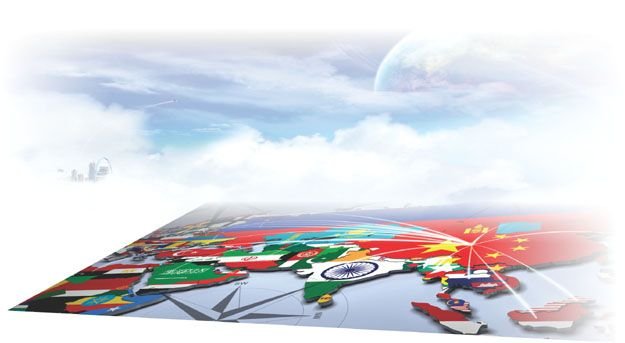
As Europe disappears, Eurasia coheres. I do not mean to say that Eurasia is becoming unified, or even stable in the manner that Europe was during the Cold War and the Post Cold War – only that the interactions of globalization, technology and geopolitics, with each reinforcing the other, are leading the Eurasian supercontinent to become, analytically speaking, one fluid and comprehensible unit. Eurasia simply has meaning in the way that it didn’t use to be. Moreover, because of the reunification of the Mediterranean Basin, evinced by refugees from North Africa and the Levant flooding Europe, and because of dramatically increased interactions across the Indian Ocean from Indochina to East Africa, we may now speak of Afro-Eurasia in one breath. The term “World-Island,” early 20th-century British geographer Halford Mackinder’s phrase for Eurasia joined with Africa, is no longer premature.
The slowly vanishing West abets this development by depositing its seeds of unity into an emerging global culture that spans continents. Further encouraging this process is the erosion of distance by way of technology: new roads, bridges, ports, airplanes, massive container ships and fiber-optic cables. It is important, though, to realize that all this constitutes only one layer of what is happening, for there are more troubling changes, too. Precisely because religion and culture are being weakened by globalization, they have to be reinvented in more severe, monochromatic and ideological form by way of the communications revolution. Witness Boko Haram and the Islamic State, which do not represent Islam per se, but their botched version igniting with the tyrannical conformity and mass hysteria inspired by the internet and social media. It isn’t the so-called Clash of Civilizations that is taking place, but the clash of artificially-reconstructed civilizations. And this only hardens geopolitical divides, which, as the collapse of Middle East prison states indicates, are in evidence not only between states but within states themselves.
The combination of violent upheavals and the communications revolution in all its aspects – from cyber interactions to new transportation infrastructure – has wrought a more claustrophobic and ferociously contested world: a world in which territory still matters, and where every crisis interacts with every other as never before. This is all intensified by the expansion of megacities and absolute rises in population. No matter how overcrowded, no matter how much the underground water table and nutrients in the soil have been depleted, people will fight for every patch of ground. On this violent and interactive earth, the neat divisions of Cold War area studies and also of continents and subcontinents are starting to be erased as the Long European War passes from living memory. Europe, North Africa, the Near East, Central Asia, South Asia, Southeast Asia, East Asia, and the Indian subcontinent are destined to have less and less meaning as geopolitical concepts. Instead, because of the erosion of both hard boundaries and cultural differences, the map will manifest a continuity of subtle gradations, which begin in Central Europe and the Adriatic, and end beyond the Gobi Desert where the agricultural cradle of Chinese civilization begins. Geography counts, but legal borders will matter less so.
Hi! I am a robot. I just upvoted you! I found similar content that readers might be interested in:
http://stories.cnas.org/the-return-of-marco-polos-world-and-the-u-s-military-response
peace in the world @oktata